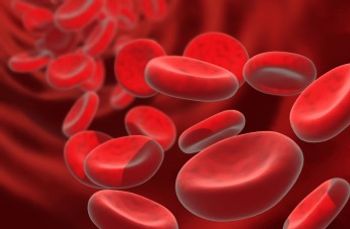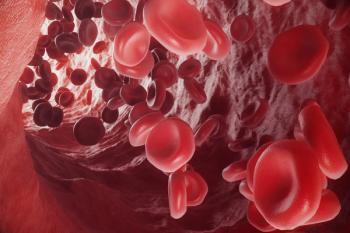
Lapatinib Does Not Improve CRT Outcomes in Non-HPV Head and Neck Carcinoma
Findings from a phase 2 trial also show that there is no progression-free survival or overall survival benefit with lapatinib plus chemoradiotherapy in patients with non-human papillomavirus–related head and neck cancer.
The addition of lapatinib (Tykerb) did not enhance the efficacy of cisplatin-based chemoradiotherapy (CRT) among patients with stage III to IV non-human papillomavirus (HPV) head and neck carcinoma (HNC), according to data from a phase 2 trial (NCT01711658) published in JAMA Oncology.
Investigators reported a median progression-free survival (PFS) of 2.2 years (95% CI, 1.3-not reached [NR]) in patients receiving lapatinib plus CRT vs 2.7 years (95% CI, 1.3-4.2) in those receiving CRT plus placebo (HR, 0.91; 95% CI, 0.56-1.46; 82% lower confidence bound = .72; log-rank test P = .34). The PFS rate at 2 years in each respective treatment arm was 50.6% (95% CI, 37.5%-63.7%) and 56.2% (95% CI, 43.0%-69.4%).
There were no differences between the lapatinib and placebo arms with respect to overall survival (OS; unadjusted HR, 1.06; 95% CI, 0.61-1.86; log-rank test P = .58), locoregional failure (LRF; HR, 1.15; 95% CI, 0.62-2.17; cause-specific log-rank test P = .67), or distant metastasis (HR, 0.64; 0.25-1.65; cause-specific log-rank test P = .17). The 2-year rates for OS, LRF, and distant metastasis in each arm were 71.8% (95% CI, 60.1%-83.5%) vs 76.0% (95% CI, 64.5%-87.4%), 30.2% (95% CI, 18.7%-42.5%) vs 29.3% (95% CI, 17.8%-41.8%), and 12.4% (95% CI, 5.4%-22.5%) vs 9.2% (95% CI, 3.3%-18.8%), respectively.
“Although this randomized clinical trial was successful in completing accrual of a shrinking HNC subpopulation within a multi-center setting, an amendment was introduced to reduce the required number of enrolled patients because of an accrual rate that was lower than projected,” the study authors wrote. “This observation should help to encourage the conduct of future clinical trials focusing on this population, although feasibility discussions should be conducted according to specific trial conditions and site participation.”
In this multi-center, double-blind phase 2 trial, a total of 127 patients were randomly assigned 1:1 to receive 70 Gy of radiation across 6 weeks plus 2 cycles of cisplatin every 3 weeks with 1500 mg of lapatinib daily (n = 63) or placebo (n = 64).
The trial’s primary end point was PFS in all randomly assigned patients. Secondary end points included OS, LRF, distant metastasis, treatment-related adverse effects (TRAEs), and quality of life.
Patients 18 years and older with untreated stage III to IV carcinoma of the oropharynx, larynx, and hypopharynx were able to enroll on the trial. Additional eligibility criteria included having a Zubrod performance status of 0 to 1 and adequate bone marrow, hepatic, and kidney function.
The median patient age was 58 years (interquartile range, 53-63). Most patients receiving lapatinib and placebo, respectively, were male (74.6% vs 79.7%), White (79.4% vs 76.6%), and non-Hispanic (96.8% vs 93.8%). Additionally, most in each respective group had primary disease of the larynx (61.9% vs 51.6%) and stage IV disease (68.3% vs 70.3%).
Across the lapatinib and placebo groups, respectively, investigators reported grade 3/4 acute AEs in 83.3% (95% CI, 73.9%-92.8%) vs 79.7% (95% CI, 69.4%-89.9%; P = .64) and late AEs in 44.4% (95% CI, 30.2%-57.8%) vs 40.8% (95% CI, 27.1%-54.6%; P = .84). Additionally, 6.8% of those in the placebo plus CRT groups experienced grade 5 TRAEs.
Common TRAEs in the lapatinib and placebo groups, respectively, included grade 3 dysphagia (31.7% vs 45.8%), grade 3/4 lymphocyte count decreases (26.7% vs 18.6%), and grade 2/3 dry mouth (25.0% vs 32.2%).
Reference
Wong SJ, Torres-Saavedra PA, Saba NF, et al. Radiotherapy plus cisplatin with or without lapatinib for non–human papillomavirus head and neck carcinoma: a phase 2 randomized clinical trial. JAMA Oncol. Published online September 28, 2023. doi:10.1001/jamaoncol.2023.3809
Newsletter
Stay up to date on recent advances in the multidisciplinary approach to cancer.

















































































